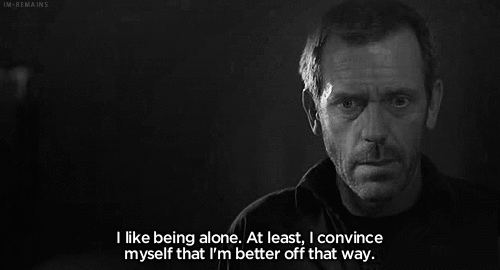
Health Minister Eric Hoskins often uses this impressive sound bite to drown out any criticism of his government's bully-boy conduct.
It's a good strategy. After all, who would argue a 61 per cent raise?
But before we break out the champagne, let's look at the proof behind this so-called raise. In an effort to trace the source of this figure, I combed through the Canadian Institute of Health Information site; the Institute of Clinical Evaluative Sciences site; blogs by Dr. Shawn Whatley, Dr. Scott Wooder and Dr. Mario Elia. I even bearded the lion's den and scrutinized the numbers on the Ministry of Health's website.
Nothing.
I am a physician trained to make decisions based on credible evidence. And yet, neither I nor anyone I know can understand how the government arrived at 61 per cent.
What I do know is that two thirds of Ontario physicians are paid via the fee-for-service model. They are the "average physician." They are paid according to the Schedule of Benefits, a convoluted several-hundred page manual drafted by the Ontario government. So, what if we compared payment codes from 2003 to 2015? Surely that would corroborate the 61 per cent raise.
Nope. Still nothing. Below are examples of my own experiences illustrating some common fee codes:
Monday. Family medicine clinic. Mr. X needs a prescription refill -- a straightforward request, easily fulfilled. With his hand on the doorknob, he says, "Doc, my wife said to tell you -- I get dizzy, so dizzy that sometimes I can't ride my bike." Now Mr. X is an avid cyclist so this is indeed an anomaly. I tell him to sit back down. His neurological exam is normal; dizziness is exceedingly common and does not usually portend bad things. But, the story doesn't track. I arrange for him to have an urgent CT scan.
Diagnosis: Brain tumor.
Code: A007 = $28.50 (2003) vs $33.70 (2015).
18 per cent increase.
Friday. Georgetown hospital. I'm on call. My pager beeps, followed by an overhead announcement: "Anesthesia to Emerg STAT." I run. A nurse ushers me into Trauma Bay 1. It's a mess: blood on the stretcher. Pieces of cut clothing on the floor. And a three-year-old boy, his neck encased in a collar, his whip-thin body on a backboard. His mom is bruised and crying, holding his hand. His face -- jaw broken, teeth missing, left eye purple and swollen shut. He pants and whimpers. "We need to intubate and stabilize him before rushing him to Sick Kids," the ER doc explains. Pushing thoughts of my own three-year-old away, I get to work.
Diagnosis: facial fractures from motor vehicle collision.
Code: G521A + G523A = $120.95 (2003) vs $165.75 (2015)
33 per cent increase.
Saturday. My day off. My family and I sit down for Thanksgiving dinner. Unexpectedly, my cellphone rings. It's the OR asking if I could drive in. The Anesthetist-on-call is stuck with another patient, and there's a pregnant woman needing an emergency c-section. It cannot wait. I grab keys, wallet, hospital ID and run. I miss the family dinner; by comparison, the woman and her baby are safe.
Diagnosis: emergency c-section for fetal distress.
Code: P018C x 1.5 hours = $176.55 (2003) vs $225.15 (2015)
28 per cent increase.
Thursday. Family medicine clinic. Mrs. Y calls: could I do a house-call? Her asthma is bothering her. At lunch, I drive to the retirement home. Mrs. Y is crumpled in her chair, breathless. Short-cropped white hair surrounds a pale face. Thin hands flutter against her chest. I sit by her side, "Tell me what happened." I listen to her heart beating irregularly -- and call an ambulance to take her to Emergency.
Diagnosis: unstable atrial fibrillation
Code: A901 + B990= $61.25 (2003) vs $81.55 (2015)
33 per cent increase.
Minister Hoskins is correct to some extent: Ontario physicians are paid more today than they were a decade ago -- but to what extent is unclear. What evidence is there that proves we got a 61 per cent raise? I find it suspect that nobody can reproduce this number.
How can I then trust the other facts and figures Minister Hoskins tosses around?
It's true that the physician services portion of the health-care budget has increased since 2003. However, this budget reflects many underlying factors: inflation and increase in daily cost of living; population growth of 1.3 million Ontarians; an aging community with more complex illnesses needing more visits; restructuring of family physicians into team-based models; the addition of over 5000 more practicing physicians to Ontario -- the list goes on.
Let's consider the biggest reason for more spending in the physician services budget: government efforts to recruit and retain physicians.
For physicians who worked here 20 years ago, the actions of the Liberal government are an echo of the past. This same scenario played out in the 1990s: to combat a ballooning provincial debt, the Ontario NDPs instituted a slash-and-burn approach to physician services. In the end, Premier Bob Rae got his balanced budget. But the damage was done: the government drove out thousands of frustrated, demoralized physicians. At its worst, one in 12 family doctor had closed their practice. This was a direct consequence of a government that refused to negotiate a fair contract, that instead punished its physicians with unilateral cuts.
How long did it take to recover from that short-sighted mistake? 15 years. Fifteen years from the start of the fee cuts to re-establishing trust between physicians and the government. Fifteen years to re-build an adequate physician base to meet Ontario's healthcare needs.
No doubt, this time around will be worse. After all, we were not yet out of the woods when the first round of fee cuts fell -- there were still 900,000 Ontarians without a family doctor when the Liberals began this boondoggle. I wonder how much that number will grow to in five years? In ten years?
This is a warning to the Liberals: ignore history at your own peril.
ALSO ON HUFFPOST:
